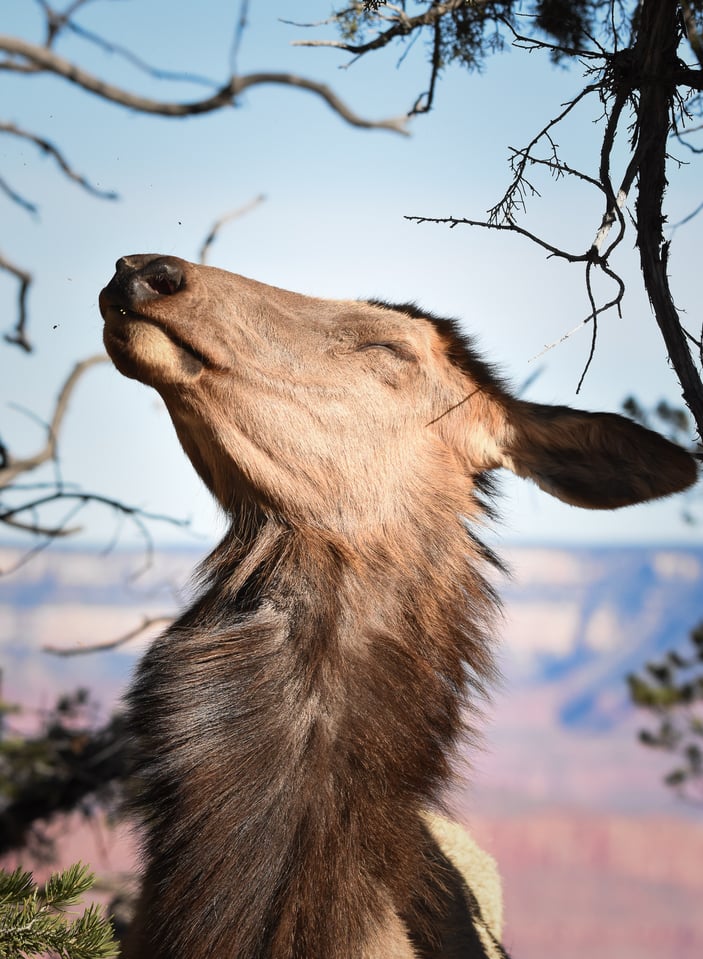Should You Upgrade From a D7000?
Will upgrading from the D7000 make your photos better? Pretty unlikely. If you’re missing focus a lot in action scenarios then the D7200 will likely improve your hit rate. Other than that, the D7000 is an amazingly capable machine and very few photographers ever max out its abilities. Will upgrading from the D7000 make you a happier photographer? Quite likely. The D7200 has a brighter viewfinder, a better LCD monitor with one-touch zoom, quiet shutter mode, exposure delay, a usable 1.3x crop mode, video button ISO setting… basically a bunch of little features my D810 has spoiled me with that my D7000 doesn’t have. Furthermore, the position of the buttons and dials is more similar to the D750 and D810 than they are to the D7000. Grabbing the D7200 feels more seamless in my shooting flow than going back to my D7000. The one bummer is going from 6 fps (D7000) to 5 fps (D7200) in 14-bit lossless.
Going from a D7000 to a D7200 is like going from a car with crank-up windows to one with power windows and cruise control. It won’t get you there any faster, but you’ll enjoy the ride more.

Should You Upgrade From a D7100?
I think a lot of video and time-lapse fans will find the D7200 a worthwhile upgrade to the D7100. With the D7200 you now get 1920x1080p at 60 fps (1.3x mode only), flat control, auto-ISO in manual mode, zebra stripes, and in-camera time-lapse with exposure smoothing and up to 9999 frames. If you shoot action, then the larger buffer and new AF-system will be welcome as will the ability to quickly set ISO with the video record button. Except for the ability to change aperture and ISO in live view when shooting stills, for landscapes or slow-moving subjects I don’t think there’s much new to entice users to go from the D7100 to the D7200.

D7200 vs D810
For action sequences, I think the D810 in DX mode is better than the D7200 as it gives a faster frame rate 7fps (with optional battery grip and AAs or D4s battery) and a much bigger buffer. If you need “reach” for small and/or distant subjects, then the D7200 is the winner.

If you are just shooting all-around subjects and don’t need 36 MP of memory-hogging detail, then you can save 1800 bucks by getting the D7200. DX sensors are so good these days that unless you shoot at very high ISOs or you frequently make prints larger than 16”x20”, then you really don’t need a full frame camera.
If you want a full-frame camera and don’t mind dealing with the huge 36 MP files, then the D810 is an outstanding all-around camera, excelling at full frame landscapes and holding its own in DX action mode.

D7200 vs D750
Did I say you don’t need a full-frame camera? But the D750 files are just so yummy. If you can afford the extra grand, the D750 is another outstanding all-around camera. The D750 has a faster frame rate (6.5 fps), but also a smallish buffer so isn’t a great choice for action. Nevertheless, it kicks ass at everything else. It also has a tilt screen that is nice for low and high angle work and it has Group-AF if you’re into that “group” thing. The strengths and weaknesses of the D7200 and D750 are pretty much the same. If you’re already invested in a bunch of DX lenses or desire more “reach”, then the D7200 is the better choice. If you want better low light performance, want to print big or want to get the most out of your stable of FX lenses, than the D750 is the winner.

D7200 vs Canon 7D Mark II
For action, the 7DMkii with its 10 fps (at 14-bit) absolutely trounces the D7200. But for all-around photography, Nikon’s sensors have a reputation for higher quality files. Furthermore, the D7200 has a smidge more leeway for cropping as it has a 24 MP sensor compared to the 7DMkii’s 20 MP sensor. If you’re not into capturing fast action sequences then you don’t need a 7DMkii – it’s a specialized pro-quality camera for sports and wildlife shooters. The D7200 is an enthusiast or “prosumer” body.

D7200 vs D5500 and D3300
The D3300 and D5500 feature 24 MP sensors similar to the D7200 and are capable of taking great shots. The biggest differences are that the D7200 has more dials letting you adjust your settings quicker, and has a more rugged build. If you shoot mostly in Auto or Scene modes and don’t care to mess with your settings then the D3300 or D5500 should suffice unless you need a heavier more rugged body. If you shoot in manual mode or shoot tens of thousands of images every year, then the D7200 makes sense.